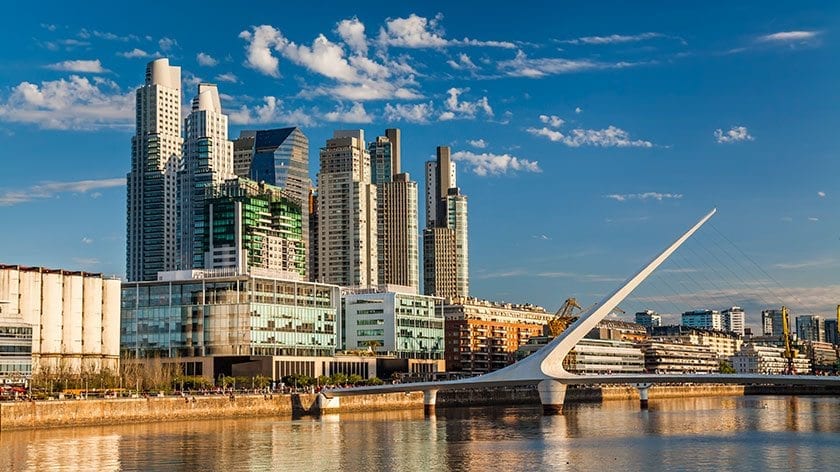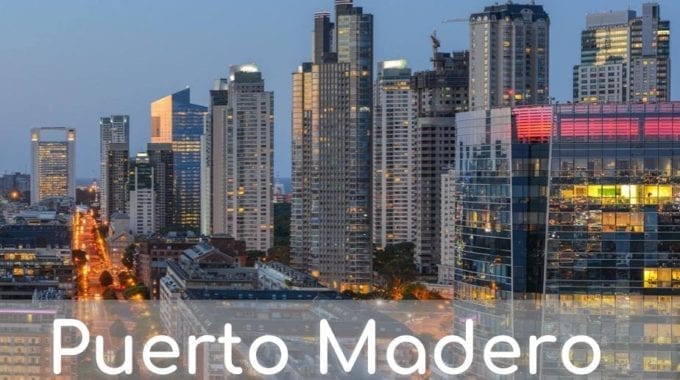Puerto Madero History
The story of what is today one of the nicest neighborhoods in the city of Buenos Aires begins over one hundred years ago. Although Buenos Aires is conveniently located right on the banks of Rio de la Plata, the shallow waters of the river have always prevented cargo ships from docking directly. Instead, all cargo and passengers were loaded onto smaller barges and ferries in order to be transported onto land. So in 1882 the Argentine government contracted local businessman Eduardo Madero (who the port is still named after today) to create a new port that would resolve this docking problem.
It took 10 years to construct the original port (1887-1897), although it was very quickly rendered obsolete in spite of the labor and cost of its construction. The government then contracted a new engineer, Luis Huergo, to construct the Puerto Nuevo to the north, which is still operational today.
With Puerto Nuevo’s completion in 1926, Puerto Madero fell into disuse and the area suffered from considerable neglect. Although various projects to redevelop and urbanize the area (or in some cases destroy it) were proposed over the years, nothing happened during most of the 20th century until the 90s. As the 20th century changed into the 21st, the neighborhood received a sudden make-over and became the home to luxury hotels and apartments; restaurants, cinemas, and shops; even office and corporate buildings were constructed.
With its re-development, the streets of Puerto Madero were named in order to pay homage to women. Each street is named after a famous woman from Argentine history. One of the main attractions in modern Puerto Madero is the Puente de la Mujer, designed by Spanish architect Santiago Calatrava. This beautiful footbridge is meant to be a representation of a couple dancing tango.


The port itself is beautiful and is a popular spot to walk (or rollerblade) around in. Nearby are beautiful parks, the Ecological Reserve, and various monuments and sculptures that can be found throughout the area. Some other attractions are the historical museum ships that remain docked in the port, the ARA Uruguay and the ARA Presidente Sarmiento, as well as some more traditional museums: el Museo del Humor, La Colección Fortabat (the art collection of the wealthiest woman in Argentina), and the Pabellón de las Bellas Artes.
If you want to escape the densely populated city streets, Puerto Madero is a great neighborhood to get some fresh air and relax!
Also Read about the other areas of Buenos Aires like Palermo, Recoleta, San Telmo and More!
100 Barrios Part 1: Unofficial neighborhoods of Buenos Aires
For more information about Puerto Madero contact Vamos Spanish Academy. Learn Spanish in Buenos Aires




